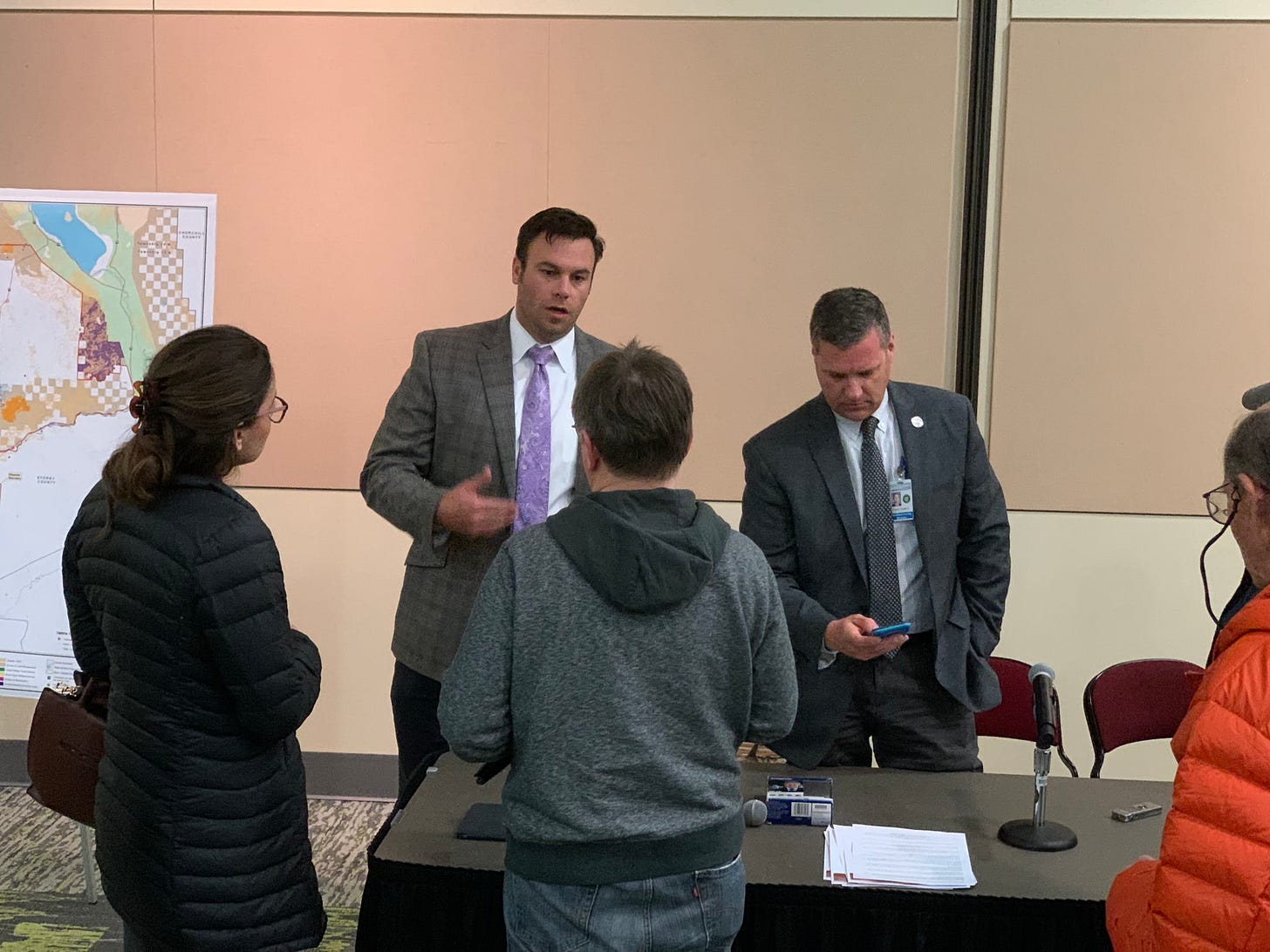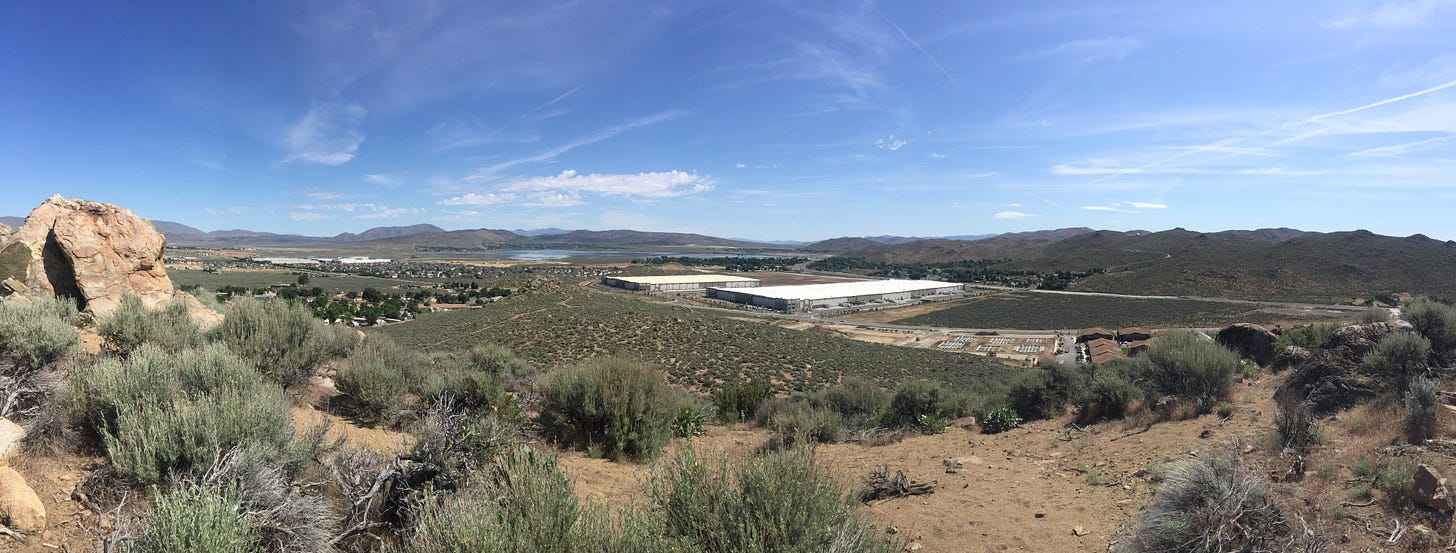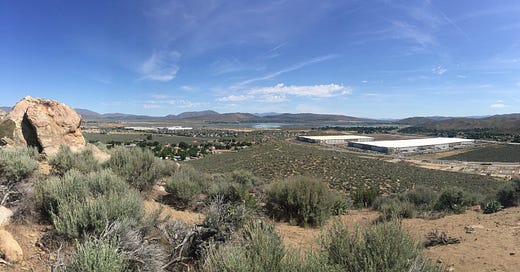Goodbye, 2021! I hope this finds you well in the final days of the year. I thought I'd utilize this slow last week to opine on some late-breaking news that may have been overlooked in the holiday/Omicron/December storm focus. Thanks for reading!
I first heard about a Washoe County federal land disposal proposal around 2004. As I recall, some county planning staff members were grumbling that Washoe County Commissioners wanted to increase the land supply for development. They were concerned about the public costs of new water and sewer lines, public safety coverage, and road maintenance.
The model for a disposal bill was a 1988 Congressional law that authorized the federal Bureau of Land Management to sell off designated lands within the Las Vegas valley for private development. This sell-off continues today and contributes to Clark County's sprawling development pattern. The law allows proceeds from land sales to be used to acquire and conserve other public lands throughout the state.
It is federal policy to keep land public. The Clark County bill is an exception to this policy. Nevada is the state with the highest percentage of land area that is federally owned. Perhaps, for this reason, the land disposal movement has strong traction in our state.
Washoe County interests have sought a similar bill for this county. I've been unclear who the Washoe County sell-off proponents are (and they may have changed over the 15 years) and why they are steadfast that new lands are made available for development. This lack of clarity may be because the reasons for a lands bill have shifted over time, and opaqueness surrounds the effort.
The second push for a lands bill occurred around 2013 after I was elected to the City Council. The Washoe County Commission, which despite membership turnover has been a consistent bill proponent, directed staff to explore the concept. This bill proposal included some auxiliary purposes. One was to identify parcels of land necessary for local government uses, and another was to identify lands that gain wilderness status.
I distinctively recall a director of a statewide environmental organization encouraging me to support the bill. In the organization's view, the sell-off of federal lands was an acceptable trade-off for gaining wilderness status for lands that could otherwise be mined or degraded.
I did not buy that quid pro quo argument. Nor did I believe that the bill was necessary to authorize public use of specific parcels. Existing law allows, for example, for property to be identified and released as use for a school site or water treatment facility. This Sierra Nevada Ally has a good timeline on the history Washoe County land bill efforts.
Fundamentally, I believe that if lands are to be disposed of for private development and this results in expansion of our region’s footprint:
1) It must be demonstrated that the lands are necessary to meet growth projections.
2) The new development must advance the regional plan policies related to fiscal soundness, environmentally responsible growth, social equity, and land use form.
3) The demand for infrastructure and services to these outlying lands should not undermine local governments’ capacity to maintain infrastructure and public services in established areas.
In other words, a high bar to pass! I think most Washoe County residents share my sentiments. I base this assertion in part on results of the Truckee Meadows Water Authority annual customer survey, where growth concerns rank high.
Nonetheless, the 2020 land disposal effort proposed to add upwards of 90,000 acres to the region's development footprint. This is equal to approximately another four Sparks-sized cities. The Nevada Independent covered the public outcry on the 2020 effort.

In 2021, Economic Development Authority of Western Nevada (EDAWN) is the leading proponent for a land bill. This entity is a private organization with a board of directors tilted toward land development interests.
EDAWN recently released a carefully crafted study finding that - the region is - running out of land!!
Make that vacant land though because the study neglected to consider previously developed land. This is an important distinction because land can often be put to other uses over time. Reusing land is also known as redevelopment or land recycling. Land recycling is generally more fiscally efficient for a local government. This is because the land already has infrastructure in place, and public services like police patrols, solid waste routing, and fire response are supplied.
It is not surprising that EDAWN, given its membership leanings, would focus on vacant (also known as greenfield) land. Greenfield development is typically easier to undertake than redevelopment. At the region's fringe, the land is not troubled by neighbor concerns. Nor does it require assembling small parcels into larger ones. But greenfield development almost invariably results in additional costs like those associated with road widenings, water, and sewer line extensions, and expanded public service coverage.
The EDAWN study mentions several private stakeholders who aided in the report’s preparation. I want to highlight two of these stakeholders, but with a caveat. While the study may be laying the groundwork for a land bill that could spur business opportunities, I genuinely believe that all participating in the EDAWN study are interested in our region’s success. I think they are, however, participating in a misguided process.
Let's consider Dermody Properties, a homegrown real estate development firm that also builds in other cities. They specialize in warehouse/logistics buildings. Some of their recent projects are in Verdi, another one of about a million square feet is under construction on former University Farms land at East McCarran Boulevard and Mill Street. These projects require sites of up to 50 acres. EDAWN's report determines that not much land remains for this purpose.
But should logistics/warehousing, because it is so land consumptive (not to mention how much truck traffic it involves) be a critical part of our economy?

What sort of return on public investment does logistics return in terms of benefits to the local government’s fiscal condition and the wages it pays to workers? Is the economic benefit of logistical warehouse buildings during the construction stage when the developer (e.g., Dermody) and others are at work or are there significant economic community benefits throughout the building's life? Because logistics/warehouse figures so heavily in recent growth, these largely unanswered questions should be addressed before releasing public land into private hands for this purpose.
Another report stakeholder is a real estate company named Stonegate. This company has an approved residential planned community for about 10,000 people in Reno's portion of Cold Springs. The report also mentions the need for additional land for residential development. I can understand why Stonegate and other stakeholders would want more land available for future projects because these rely upon a model of expanding suburbia.
But private business interests should not drive public policy. That should be formulated in documents like the 2017 Reno Master Plan, which I spearheaded. But plans are only helpful if followed and implemented. Within six weeks of the Plan's adoption, I met with the city manager's office to discuss what I believed was the most critical land-use implementation task:
IMP-2.4a. Periodically monitor the city's land supply in relation to goals and policies of the Master Plan and make publicly available an inventory of developable employment and residential land by type within the city's sphere of influence.
I subsequently encouraged the Planning Commission to focus on this policy. It was also one of the first issues I raised to current City Manager Thornley when he started his tenure in October 2020.
The land study envisioned in the Reno Master Plan policy is more comprehensive than the EDAWN one and, if undertaken, will provide better information on which to base future decisions. It would help answer the questions I raised above about federal land disposal and the use of land for logistics/warehouse development.
The analysis envisioned in the 2017 Reno Master Plan is also urgently needed to understand how to provide housing that is affordable. A prior City study found the more affordable housing would be built on recycled land rather than greenfield land. Because the EDAWN study did not consider this option we do not know how disposed land would stack up in terms of delivering new affordable residential units.
EDAWN and other land bill proponents have two options. They can forge ahead and try to get the bill passed in D.C. I do not blame our U.S. Senators or Congressman for thinking the land bill is what constituents want when they hear from EDAWN or others. But this advocacy will run up against community sentiment and opponents who have become more organized over the years and know how to be effective in D.C.
My preferred approach is that land bill proponents join me in supporting the land-use study called for in the Reno Master Plan. In addition, there is a lot of catch-up to be done for the growth that has already happened. This includes areas like Verdi where private development occurred, but infrastructure and public facilities are inadequate. Meanwhile, established neighborhoods need to be assured that their aging infrastructure will receive sufficient attention and that public safety will be maintained.
Once this occurs, perhaps our region can start eyeing an expanded footprint in combination with robust redevelopment. Until this happens, the disposal of federal lands will continue to be viewed as a profiteering land grab and opposed.
Jenny Brekhus is the Ward 1 Reno, NV, City Council Member. When this newsletter expresses opinions and views without other attribution, they are her own. They do not reflect official views or positions of the City of Reno or the Reno City Council unless otherwise noted. This publication and any response it generates communicated through any channel may be subject to disclosure under Nevada Public Records Act if it substantively refers to City of Reno business.


